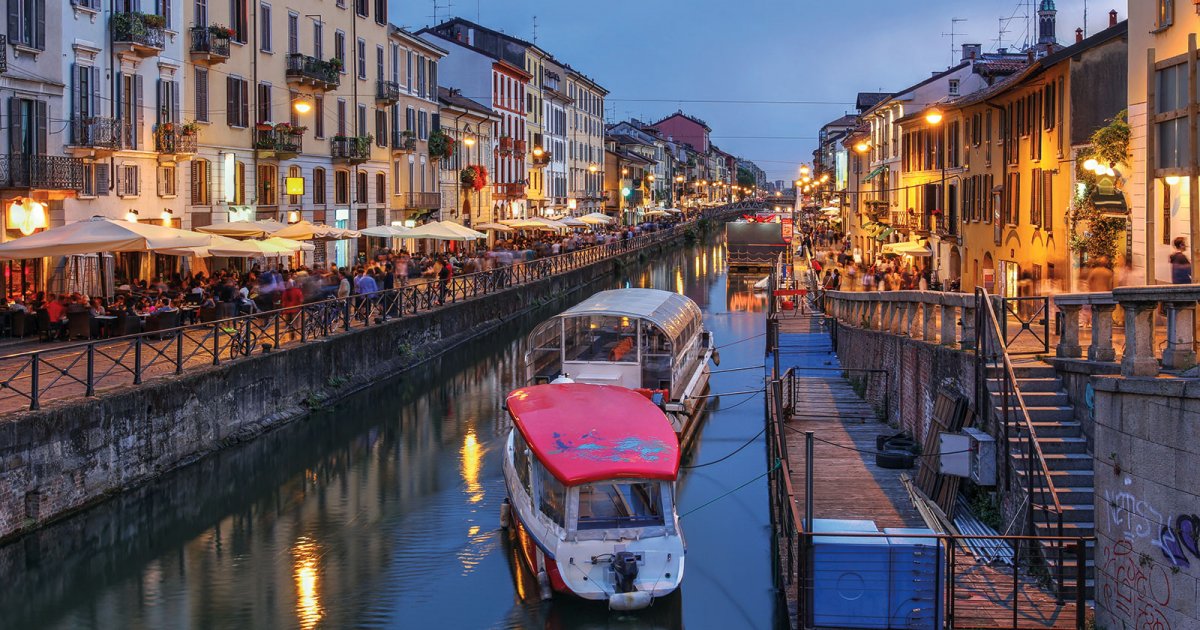DARSENA, History Of The Navigli Canals
 Language: English / USA
Language: English / USA
The construction of canals in Milan dates back to medieval times and has been done for thousand of years! After long wars against the Empire in the twelfth century, the city finally managed to become a Free Community: it then decided to connect the ditch that ran around the city's walls with the waterway network that had been organized for irrigation by the religious congregations of the Cistercians and the Humiliated. This solution ensured a better inflow and outflow of water. The route of the Naviglio Grande between Milan and Abbiategrasso dates back to this period.
During the Visconti dynasty, further impetus was given to the system of canals, especially with regard to the transport of goods and materials.
When work began on the construction of the Cathedral in Milan, a rather large problem was created in bringing an enormous amount of material into the city. Starting from the delta of the Toce River at the mouth of the Val d'Ossola in Lake Maggiore, barges loaded with marble blocks came up to the Ticino River dock. But there was a hitch: there was a difference in height of a meter and a half between the canal and the inner circle of water, so the barges were forced to stop there. To solve the problem, the first pound lock was built in Europe in the first half of the 1400s, called the Conca di Viarenna, which is still visible a short distance from the dock. From that moment on, the barges could overcome the difference in height and easily bring the marble up to the "pond" behind the Verziere, a few dozen meters from the Cathedral's construction site.
In the mid-sixteenth century, the circle of ancient canals was incorporated into the Spanish ramparts, a huge military project eleven kilometers long; in addition to ensuring the passage of goods, these internal waterways were used to irrigate the many gardens that have existed within the city's walls for centuries. In the second half of the nineteenth century, Milan's expansion was so rapid and intense that already in the master plan of 1884, designs planned to pave over the circle of canals. The paving was actually carried out in 1929.
FUN FACT: up until 1929, even the large reels of paper used to print Milan's main newspaper, "Corriere della Sera", came by water thanks to the canals.
And with this we have finished our tour of the Darsena area of Milan: MyWoWo thanks you for staying with us, and will see you at the next Wonder of the World!



